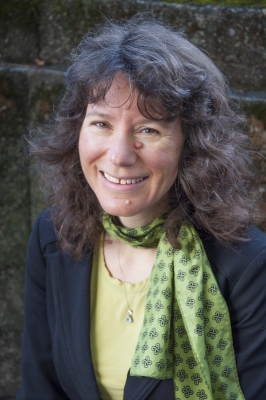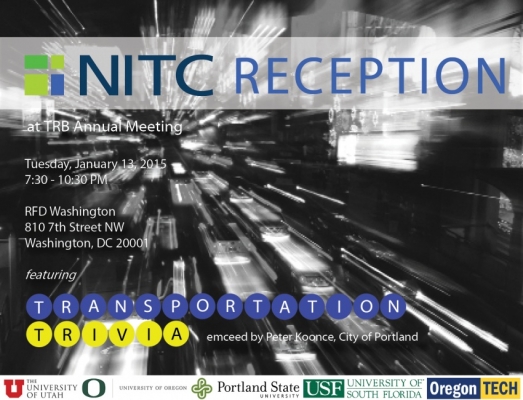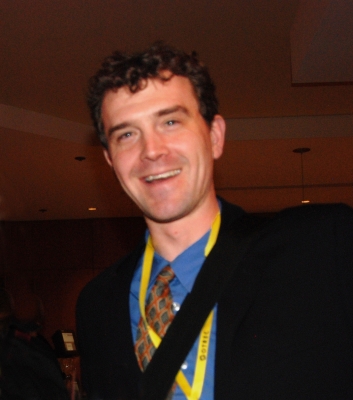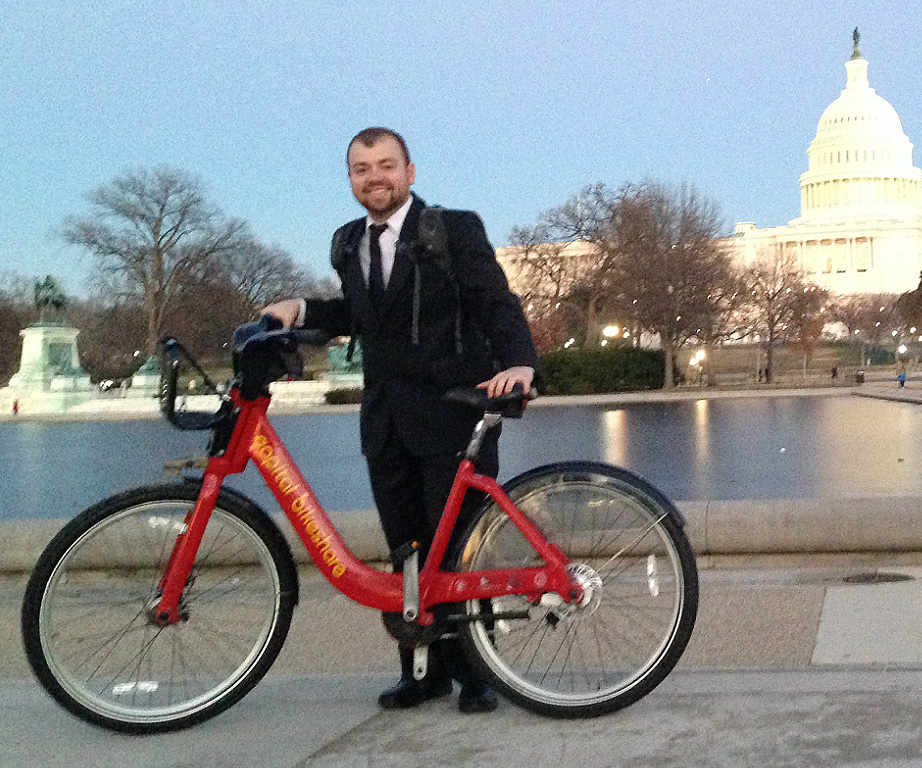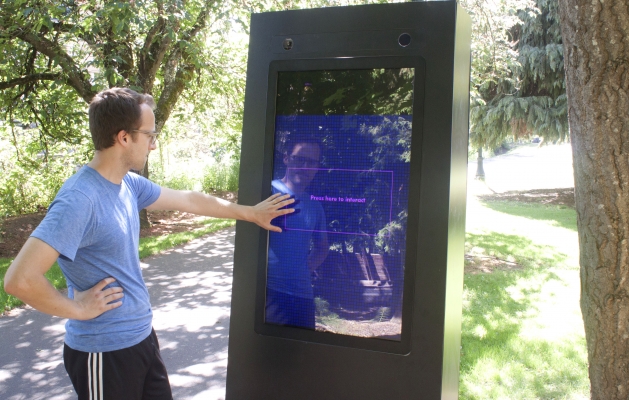Sunday, Jan. 11 is workshop day at the annual meeting of the Transportation Research Board in Washington, D.C.
Krista Nordback of TREC presents at the 1:30 p.m. (all times Eastern) workshop "Making Bicycle and Pedestrian Data Programs Count."
Nordback's will offer her portion of the workshop, "Data Sharing: A Count is a Terrible Thing to Waste," with Jeremy Raw of the Federal Highway Administration. The presentation covers the state of the practice for data warehousing of bicycle and pedestrian traffic data. It's in room 150B.
Patrick Singleton of Portland State University presents at a workshop showcasing the work of second- and third-year Eisenhower doctoral fellowship recipients from top universities across the country. Singleton presents "The theory of travel decision-making: A conceptual framework of active travel behavior." The workshop begins at 9 a.m. in Room 202A.
For a full listing of presentations from NITC campus-affiliated researchers each day at TRB, download our guide to TRB....
Read moreMonday, Jan. 12 marks the first day of lectern and poster presentations at the annual meeting of the Transportation Resarch Board in Washington, D.C. It's also the busiest day for researchers representing the National Institute for Transportation and Communities' member campuses.
Marc Schlossberg leads a team from the University of Oregon presenting the NITC project "Rethinking Streets: Evidence-Based Guide to 25 Complete Street Transformations." The presentation highlights the book of the same name, which uses evidence from completed street projects from around the United States in order to help communities imagine alternative futures for their streets. You can watch a NITC Webinar on the topic or learn more. The lectern presentation at TRB starts at 3:45 p.m. (all times eastern) in room 209A of the convention center.
Reid Ewing of the University of Utah presents on the NITC project "Effects of Light-Rail Transit on Traffic in a Travel Corridor." The analysis found that, after the opening of a Salt Lake City light-rail line, traffic on an...
Read moreTuesday marks another busy day of lectern and poster presentations at the annual meeting of the Transportation Research Board in Washington, D.C., with presentations from core TREC faculty along with current and former NITC student of the year recipients. The day concludes with the annual NITC reception, which all are welcome to attend. More information on the reception is at bit.ly/nitc-trb2015.
TRB helps mark the 10th anniversary of Portal, TREC's multimodal transportation data archive, with a presentation at 10:15 a.m. in room 151A. Kristin Tufte of Portland State, who manages Portal, presents her paper on the history of the program and some of the ambitious changes it's undergoing. Portal was founded in 2004 by Robert Bertini, who also co-authored the paper with Morgan Harvey. Portal started with a single data source, freeway loop detector, and has grown in ten years to contain freeway data, arterial signal data, travel times from Bluetooth detection systems, transit data and bicycle count data. Portal has also grown geographically, and Tufte will offer examples of how Portal data has been used by regional partners – with a focus on measuring the performance of the multimodal transportation system, but also including educational elements and research.
Sirisha Kothuri recently earned a...
Read moreToday marks the last full day of presentations at the annual meeting of the Transportation Research Board and the final day of NITC lectern and poster sessions.
The NITC project Lessons from the Green Lane continues to resonate, with the data spinning off four papers -- three of them presented today -- at TRB. Nathan McNeil delves into greater detail about buffers that separate cyclists from motor-vehicle traffic, and which define protected bike lanes. He presents the paper "Influence of Bike Lane Buffer Types on Perceived Comfort and Safety of Bicyclists and Potential Bicyclists" at 2:45 p.m.
McNeil broke down users and potential users of different bike facilities into groups defined in the Four Types of Transportation Cyclists categories. He analyzed the increase in comfort a user experienced in a protected lane over a standard bike lane.
The biggest increase came in the "interested but concerned" segment seen as key to getting more people to use bikes. "If something is physically separated, 'interested but concerned' people feel much more comfortable," McNeil said. "It suggests that the market that's...
Read moreCheck out a quick summary of our activities each day at TRB:
Researchers at campuses affiliated with the National Institute for Transportation and Communities, or NITC, will present 86 papers at the annual meeting of the Transportation Research Board of the National Academies. That's a record number for the Portland State University-based university transportation center, dating back to the 2006 founding of OTREC.
The NITC program is led by Portland State with partners University of Oregon, Oregon Institute of Technology, University of Utah and University of South Florida. The five universities had the work of 93 researchers, as author or coauthor, accepted for presentation Jan. 11-15 at the meeting, the preeminent national conference for transportation researchers. Around 12,000 people from around the world are expected to attend.
To present at the TRB meeting, researchers must submit full research papers for peer review. Only around half of the submitted papers are chosen for presentation at the meeting.
The researchers from NITC campuses will present 25...
Read moreKnowing how many travelers use a transportation system is important for a number of reasons. Engineers and planners need to be able to estimate travel demand, and to do so they typically count the vehicles. Annual average daily traffic (AADT) counts have been collected for decades in the United States.
In recent years the demand has increased for non-motorized counts....
Read moreDespite the many connections between transportation and public health, many agencies tasked with long-range transportation planning have yet to completely consider effects on health, a Portland State University research team found. The research will be presented at the annual meeting of the Transportation Research Board in Washington, D.C. Jan. 11-15.
Patrick Singleton, a Portland State graduate student researcher, will present the paper “Incorporating public health in U.S. long-range metropolitan transportation planning: A review of guidance statements and performance measures,” during a poster session Tuesday. The paper grew out of concepts developed in a Portland State course on transportation and health taught by Prof. Kelly Clifton, who is a coauthor on the paper.
Individually, transportation and public health each have a wealth of research. That research doesn’t always cross over, Singleton said.
“The integration of these disciplines is in its infancy,” he said.
If transportation planning agencies were to fully consider transportation and health connections, those considerations would show up in their long-term plans, the research team reasoned. Performance measures would point to the potential effects of a health focus.
The researchers focused...
 “Transportation Cost Index: A Comprehensive Performance Measure for Transportation and Land Use Systems and its Application in OR, FL, and UT” is a Portland State University research project that will be presented at the 2015 annual meeting of the Transportation Research Board.
“Transportation Cost Index: A Comprehensive Performance Measure for Transportation and Land Use Systems and its Application in OR, FL, and UT” is a Portland State University research project that will be presented at the 2015 annual meeting of the Transportation Research Board.
Portland State University researchers Liming Wang and Jenny Liu are developing a comprehensive performance measure that enables planners and the public to evaluate the performance of transportation and land use systems over time and across geographic areas.
Transportation engineers have a long history of using performance measures such as the Highway Performance Monitoring System (HPMS) to evaluate the operation of the transportation system. Traditionally, such measures heavily focus on the traffic condition, especially for drivers.
Since the last decade, especially with the...
Read moreA NITC Small Starts project has taken big steps toward connecting transit users with real-time transportation information about their communities.
The “Street Portals” project, headed by researchers Jason Germany and Philip Speranza of the University of Oregon, is reinventing transit kiosks – specifically bike share kiosks – and how users interact with them in public spaces.
Germany, an assistant professor of product design in UO's school of architecture and allied arts, has a background in designing consumer products and interfaces. Collaboration with Speranza, a practicing architect who was doing research in bottom-up urban design, led to the development of a test bed for interactive kiosks that could reshape the future of urban computing in several important ways.
Typical bike share stations have a kiosk with a touch screen interface that lets the user check out and return bicycles.
The NITC researchers are interested in creating a much richer experience that includes route planning assistance, personalized activity recommendations, and a sensitive interactive display.
The first step was to create a test bed: a sample kiosk built specifically for the purpose of testing...
Read moreThree students at NITC member universities have been awarded scholarships from the Portland, Oregon chapter of WTS.
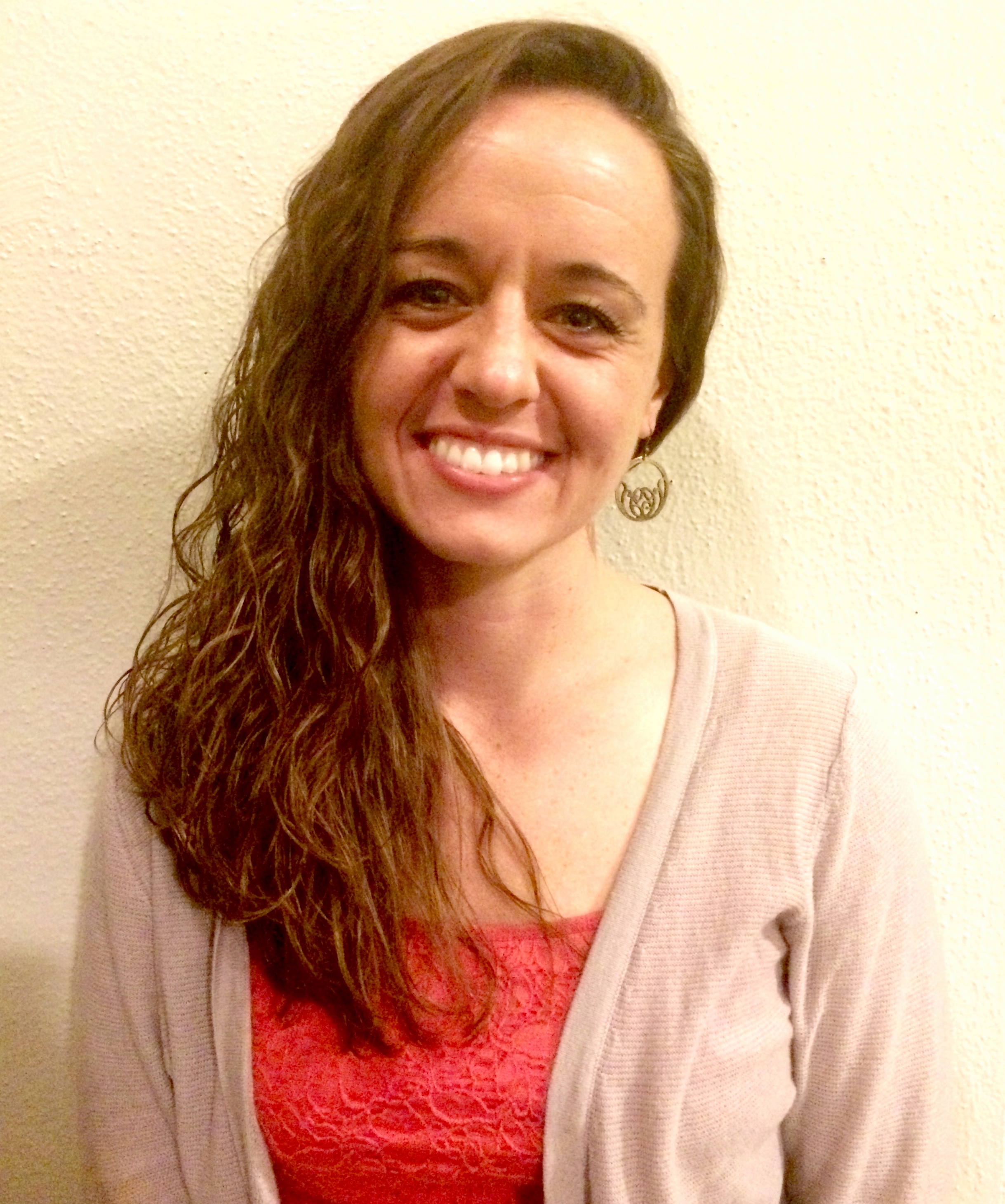 Miranda Barrus, a civil engineering student at the Oregon Institute of Technology, is the 2014 recipient of the Sharon D. Banks Undergraduate Scholarship. The scholarship honors Sharon D. Banks, chief executive officer of AC Transit in Alameda-Contra Costa County, California, who led the agency in a pioneering effort to introduce cultural and organizational changes aimed at motivating the public transit work force.
Miranda Barrus, a civil engineering student at the Oregon Institute of Technology, is the 2014 recipient of the Sharon D. Banks Undergraduate Scholarship. The scholarship honors Sharon D. Banks, chief executive officer of AC Transit in Alameda-Contra Costa County, California, who led the agency in a pioneering effort to introduce cultural and organizational changes aimed at motivating the public transit work force.
Barrus serves as vice president of Oregon Tech’s student chapter of ITE, the Institute of Transportation Engineers. She also won a scholarship for the 2014-2015 school year from the Structural Engineers Association of Oregon Scholarship Foundation. She was selected for her leadership, participation in activities, and outstanding performance in engineering.
...
Read more
